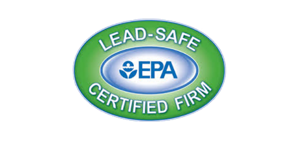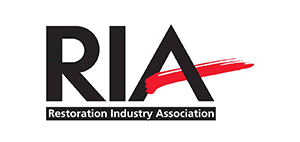Water damage is a serious concern for homeowners and property owners alike. The destructive nature of water can compromise the structural integrity of buildings, leading to costly repairs and potential safety hazards. But have you ever wondered how long it takes for water damage to cause structural harm?
In this article, we will delve into the timelines associated with water damage and its impact on the structure of homes and buildings. By understanding the factors that influence the progression of water damage, we can take proactive steps to prevent harm and effectively manage any issues that arise.
Key Takeaways:
- Water damage can harm the structural integrity of homes and buildings.
- Understanding the timelines for water damage to cause structural harm is crucial.
- Taking preventive measures and implementing repair strategies are essential in managing water damage effectively.
- The duration of water exposure, type of materials affected, and environmental conditions can influence the timeline for structural damage.
- Long-term risks of water damage include foundation damage, mold growth, and wood rot.
Understanding Water Damage and Its Effects on Structures
Water damage can have a devastating impact on the structural integrity of homes and buildings. It can occur in various forms, both inside and outside the structure, leading to significant consequences. By understanding the different types of water damage and their effects on structures, individuals can better identify potential issues and take proactive measures to mitigate risks.
Types of Water Damage:
- Interior Water Damage: This type of damage occurs when water infiltrates the interior of a structure, such as through leaking pipes, roof leaks, or flooding. It can impact walls, ceilings, floors, and electrical systems.
- Exterior Water Damage: Exterior water damage refers to the effects of water penetration from the outside of a structure. It can result from heavy rain, snowmelt, or inadequate drainage systems, and can affect foundations, siding, and roofing materials.
Effects of Water Damage on Structures:
- Weakening Foundations: Prolonged exposure to water can weaken a building’s foundation, leading to structural instability and potential collapse.
- Damage to Support Structures: Water can deteriorate wood, drywall, and other supportive materials, compromising their strength and integrity. This can impact the stability of the entire structure.
- Promotion of Mold Growth: Moisture from water damage creates an ideal environment for mold growth, which can spread rapidly and cause health issues while further damaging building materials.
It is crucial to promptly address any signs of water damage to prevent further deterioration and minimize the risk of structural harm. By understanding the different manifestations of water damage and their effects on structures, individuals can take proactive steps to protect their homes and buildings.
Early Signs and Symptoms of Water Damage in Homes
Detecting water damage early is crucial in preventing structural harm. There are several visible signs and symptoms that homeowners should be aware of to identify potential water damage issues in their homes. By recognizing these early indications and taking prompt action, homeowners can minimize the risk of long-term structural damage.
One of the early signs of water damage is the presence of water stains. These stains may appear on walls, ceilings, or floors and can indicate a leak or moisture intrusion. Additionally, peeling or bubbling paint and wallpaper can be a symptom of water damage, as the moisture causes the adhesion to weaken.
Warped materials, such as buckling or sagging walls, floors, or cabinets, are another visible sign of water damage. The excessive moisture can cause wood and other materials to swell or warp, compromising their structural integrity.
Musty odors are also common symptoms of water damage. When moisture is present, it creates an environment conducive to mold growth. The smell of musty odors can indicate the presence of mold, which not only damages structures but can also pose health risks to occupants.
Regular inspections of the home are essential to detect water damage early. Homeowners should be proactive in looking for these visible signs and symptoms and take immediate action if any indications of water damage are present. This may include contacting a professional to assess the extent of the damage and address the underlying cause of the water intrusion.
By addressing water damage in its early stages, homeowners can avoid costly repairs and prevent further structural harm. Regular maintenance, prompt repairs, and effective moisture control measures are crucial in safeguarding the integrity of homes and protecting the well-being of occupants.
How Long Does It Take for Water to Cause Structural Damage?
The timeline for water to cause structural damage can vary depending on several factors. Understanding these key elements is crucial in effectively managing water damage and preventing severe harm to structures.
One of the primary factors influencing the progression of water damage is the duration of water exposure. The longer a structure is exposed to water, the higher the risk of structural damage. Water can seep into building materials, weaken foundations, compromise support structures, and promote mold growth.
The type of materials affected also plays a significant role in the timeline for structural damage. Porous materials such as drywall, wood, and insulation are more susceptible to water damage and can undergo deterioration much faster compared to non-porous materials like concrete or metal.
Environmental conditions also come into play when considering the timeline for structural damage. High humidity levels, inadequate ventilation, and stagnant water can accelerate the deterioration process, making structures more vulnerable to harm.
It is important to note that the consequences of prolonged water exposure can be severe. Immediate action is necessary to prevent further damage and protect the integrity of the structure. Promptly addressing water intrusion, drying affected areas, repairing leaks, and implementing appropriate waterproofing measures are crucial steps in mitigating the potential consequences of water damage.
By understanding the factors influencing the timeline for structural damage and being vigilant about water exposure duration, individuals can take proactive measures to safeguard their structures and minimize the risk of long-term harm.
Evaluating Long-Term Risks and Complications
Water damage can lead to long-term risks and complications if not addressed promptly. The potential consequences of water damage include foundation damage, mold growth, and wood rot. It is crucial to conduct thorough assessments and seek professional interventions to mitigate the risks associated with water damage.
Foundation damage is one of the most significant complications that can arise from water damage. Prolonged exposure to water can weaken and erode the foundation, leading to structural instability and compromising the overall safety of the building.
Mold growth is another common consequence of water damage. Excess moisture and dampness create an ideal environment for mold to thrive, potentially causing health issues for occupants and further damaging the building’s structure.
Wood rot is another long-term risk associated with water damage. When wood is exposed to moisture for an extended period, it can rot, weaken, and lose its structural integrity. This can lead to structural damage and the need for costly repairs or replacements.
By understanding the potential long-term complications of water damage, individuals can make informed decisions to safeguard their structures. It is essential to act promptly, engage professionals, and implement appropriate measures to mitigate the risks and protect the long-term integrity of the building.
Conclusion
In conclusion, the impact of water damage on the structural integrity of homes and buildings should not be underestimated. This article has provided valuable insights into the timelines for water damage to cause structural harm and the preventive measures and repair strategies that can be employed. Understanding the early signs of water damage, the factors influencing the timeline, and the long-term risks is crucial for effectively managing water damage and safeguarding structures.
By remaining vigilant and taking proactive steps, individuals can minimize the potential consequences of water damage. Regular inspections and prompt action when signs of water damage are detected are essential preventive measures. Additionally, it is important to seek professional assistance when necessary, as expert intervention can greatly aid in mitigating risks and facilitating efficient repairs.
Ultimately, safeguarding structures from water damage requires a combination of awareness, preventive measures, and timely action. By staying informed about the risks, implementing preventive strategies, and promptly addressing any water damage issues, individuals can protect their homes and buildings from the potentially devastating effects of water damage.
FAQ
What are the early signs of water damage in homes?
The early signs of water damage in homes include water stains, peeling paint, warped materials, musty odors, and visible mold growth.
How long does it take for water to cause structural damage?
The timeline for water to cause structural damage varies depending on factors such as the duration of water exposure, the type of materials affected, and the environmental conditions. Immediate action is needed to prevent severe structural harm in certain scenarios.
What are the effects of water damage on structures?
Water damage can compromise the integrity of structures in various ways, including weakening foundations, damaging support structures, promoting mold growth, and causing wood rot.
What are the long-term risks and complications of water damage?
Long-term risks and complications of water damage include foundation damage, persistent mold growth, and wood rot. Thorough assessments and professional interventions are necessary to mitigate these risks.





















